Sand Palm
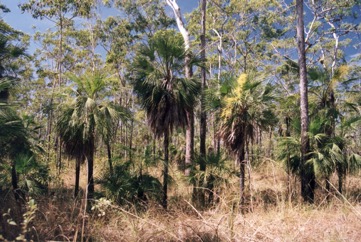
A tropical plant. It grows naturally in open forest. It is mostly on sandy soils. It is a tropical plant. It can tolerate fire. It grows naturally in tropical part of the Northern Territory in Australia. Seedlings can withstand sun. It suits hardiness zones 10-11.
Also known as:
Bulgay, Merreppem, Miparri, Miparriyi, Pakijipiyi
Edible Portion
- Fruit, Cabbage, Palm heart
Where does Sand Palm grow?
Found in: Australia
Notes: There are 28 Livistona species.
Growing Sand Palm
Cultivation: Plants can be grown from seed. Germination takes 6 months or more. Plants are not easy to transplant especially once they become large.
Edible Uses: The young central growing tip is eaten raw. The fruit are eaten. The pithy core of the stem is pounded and made into a drink.
Production: Seedlings are very slow growing.
Nutrition Info
per 100g edible portion| Edible Part | Energy (kcal) | Protein (g) | Iron (mg) | Vitamin A (ug) | Vitamin c (mg) | Zinc (mg) | % Water |
|---|---|---|---|---|---|---|---|
| Bud | 97 | 3.2 | 0.5 | - | 4 | 0.5 | 76.1 |
Sand Palm Photos

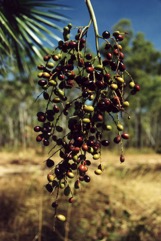
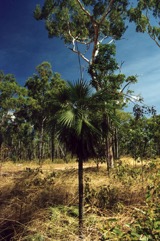
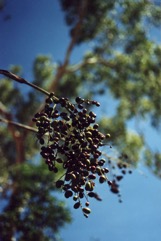
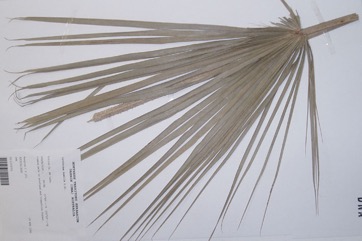
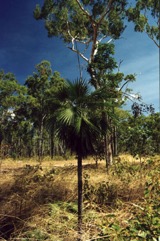
References
Brock, J., 1993, Native Plants of Northern Australia, Reed. p 238
Cherikoff V. & Isaacs, J., The Bush Food Handbook. How to gather, grow, process and cook Australian Wild Foods. Ti Tree Press, Australia p 200
Cronin, L., 1989, The Concise Australian Flora. Reed. p 242
Cundall, P., (ed.), 2004, Gardening Australia: flora: the gardener's bible. ABC Books. p 831
Elliot, W.R., & Jones, D.L., 1993, Encyclopedia of Australian Plants suitable for cultivation. Vol 6. Lothian. p 204
Etherington, K., & Imwold, D., (Eds), 2001, Botanica's Trees & Shrubs. The illustrated A-Z of over 8500 trees and shrubs. Random House, Australia. p 443
Hearne, D.A., & Rance, S.J., 1975, Trees for Darwin and Northern Australia. AGPS, Canberra p 83
Jones, D.L., 1994, Palms throughout the World. Smithtonian Institution, Washington. p 57, 260
Jones, D.L., 2000, Palms of Australia 3rd edition. Reed/New Holland. p 98
Lazarides, M. & Hince, B., 1993, Handbook of Economic Plants of Australia, CSIRO. p 150
Lord, E.E., & Willis, J.H., 1999, Shrubs and Trees for Australian gardens. Lothian. p 97
Morley, B.D., & Toelken, H.R., (Eds), 1983, Flowering Plants in Australia. Rigby. p 394
Prodr. 268. 1810
Riffle, R.L. & Craft, P., 2003, An Encyclopedia of Cultivated Palms. Timber Press. p 377
Smith, N and Wightman, G.M., 1990, Ethnobotanical Notes from Belyuen Northern Territory Australia. Northern Territory Botanical Bulletin No 10. Parks and Wildlife Commission of the Northern Territory. p 17, 18
Smith, N. M., 1991, Ethnobotanical Field Notes from the Northern Territory, Australia, J. Adelaide Bot. Gard. 14(1): 1-65
Tiwi Plants and Animals. 2001, Aboriginal flora and fauna knowledge from Bathurst and Melville Islands, northern Australia. Northern Territory Botanical Bulletin; No. 24 p 63
Townsend, K., 1994, Across the Top. Gardening with Australian Plants in the tropics. Society for Growing Australian Plants, Townsville Branch Inc. p 281
Wightman, Glenn et al. 1992, Mangarrayi Ethnobotany: Aboriginal Plant Use from the Elsey Area Northern Australia. Northern Territory Botanical Bulletin No 15. Parks and Wildlife Commission of the Northern Territory. p 30, 31
Yunupinu Banjgul, Laklak Yunupinu-Marika, et al. 1995, Rirratjinu Ethnobotany: Aboriginal Plant Use from Yirrkala, Arnhem Land, Australia. Northern Territory Botanical Bulletin No 21. Parks and Wildlife Commission of the Northern Territory. p 52